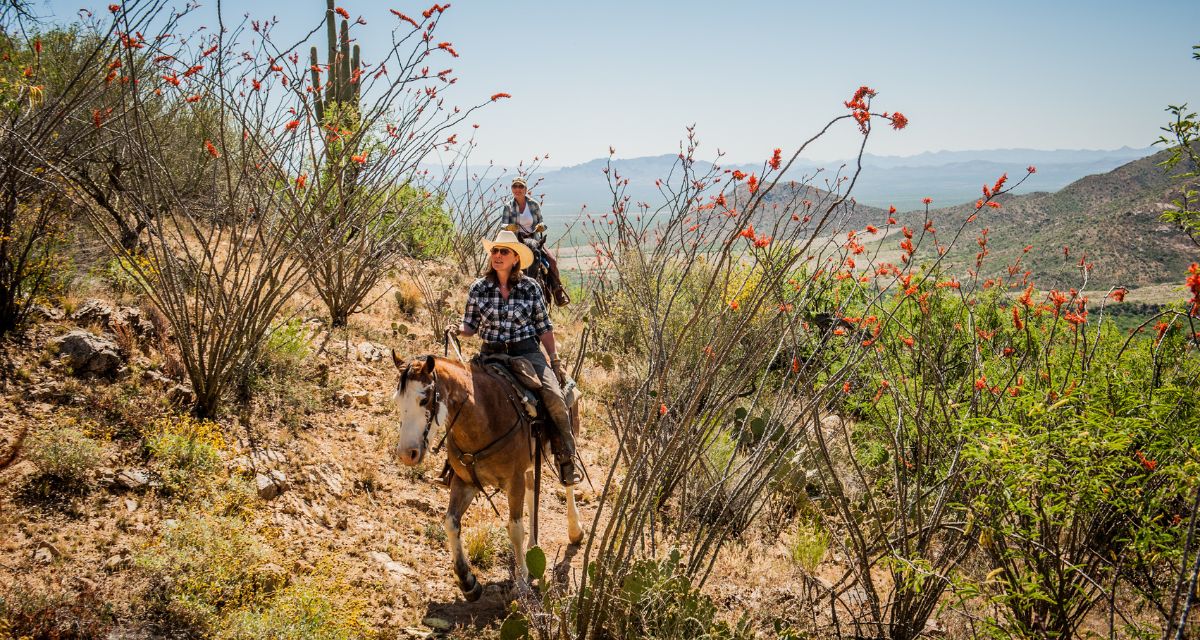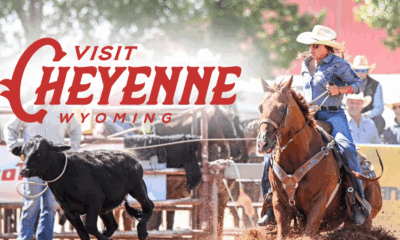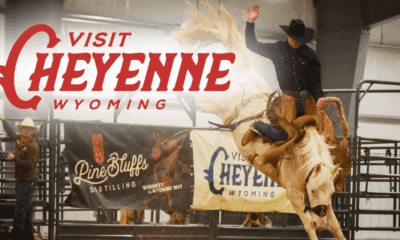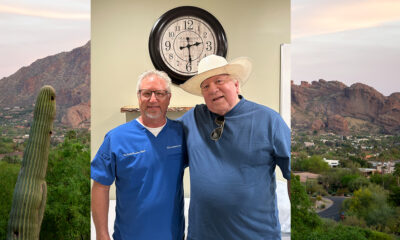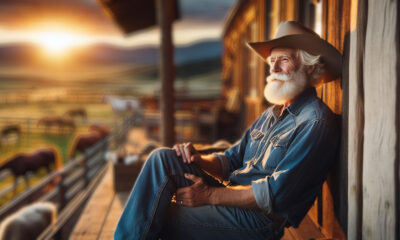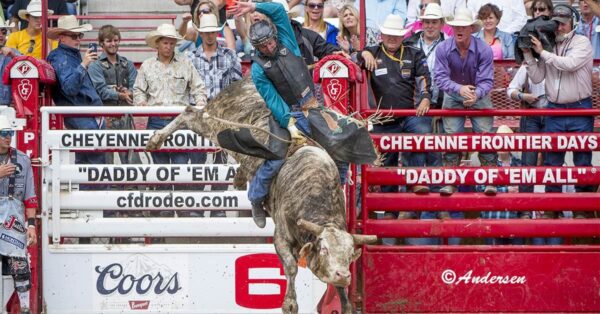The American west is a unique place, and one of the best ways to experience the true spirit of this landscape is to stay at a guest ranch. There are over 90 guest ranches (also known as dude ranches) throughout the West. These adventure-filled locations dot the landscape across the west, but we will zoom in on southern Arizona and the Elkhorn Ranch for this story. Since 1945 it has a tradition of bringing people together, both for family vacations and conserving and protecting the magnificent southwestern landscape on which it sits.
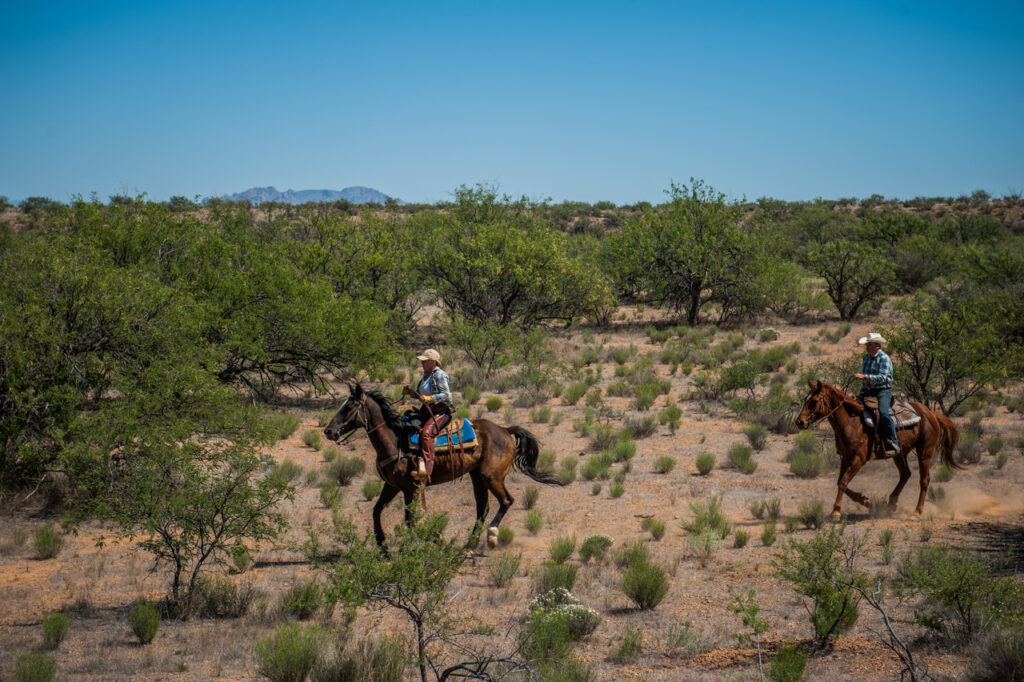
The Elkhorn Ranch, owned by the Miller Family, is located close to Tucson, Arizona, and is a seasonal operation running from November to April. The headquarters houses the guest ranch containing 20 guest cabins, a dining hall, and a commercial kitchen. From headquarters, guests leave for beautiful rides to showcase the desert and all its glory seen in the best way possible: from the back of a horse. The Millers raise cross-bred horses for the guest rides at the Elkhorn that capitalize on the positive characteristics of the American Quarter Horse, Thoroughbred, and Percheron. They learned about this mix of breeds through the US Army Remount Program active in the early 20th century. These cross-bred horses provide a combination of good bone and athleticism, making an ideal mount in the rugged terrain around the guest ranch. This combination’s docile and good-natured temperament is also valuable as the ranch raises their horses in a herd situation, using the land as the primary source of the horse’s feed. Training is done methodically and takes time, leading to a solid, trustworthy horse for guests to enjoy.
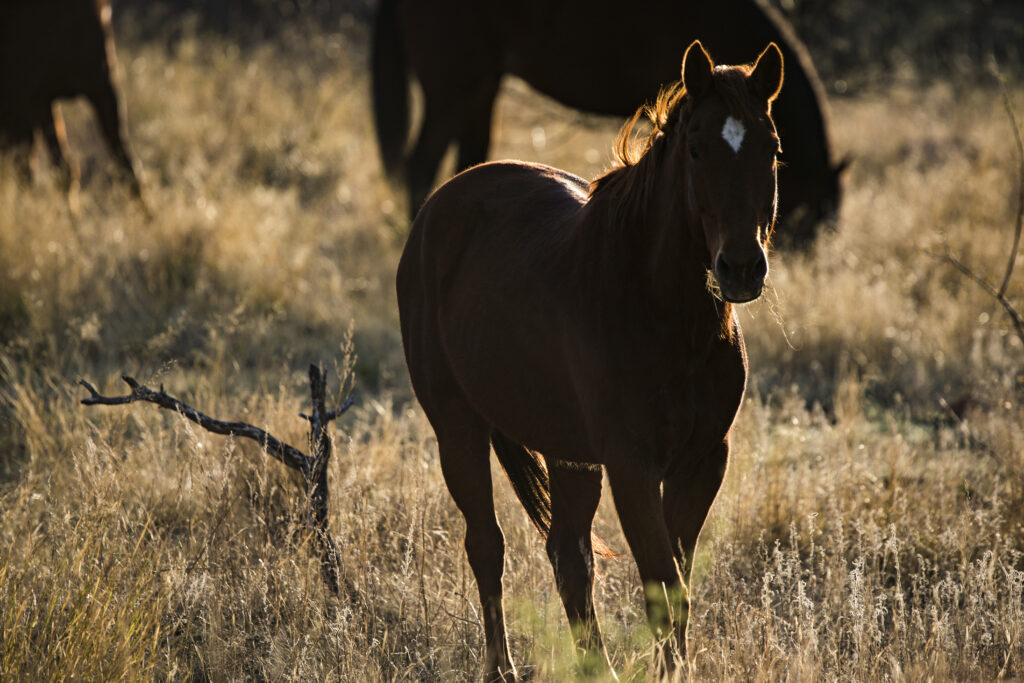
Dude ranching evolved in the early 20th century at a time when those from New England and the east coast were excited to travel the rails to get to the west and experience westward expansion for themselves. Many people were still familiar with horses or rode regularly, so this type of vacation was inviting. Now in modern times, fewer people have the outdoor, rural, horse, or cattle experience, so they aren’t drawn to it for those reasons, but instead for the peace the great outdoors offer that isn’t found in a big city or urban areas. COVID amplified this as people were stuck inside for so long that they began to crave freedom, human connection, and old-fashioned hospitality. With a renewed interest in where our food comes from, this is another perfect opportunity for urbanites to learn more on the topic.
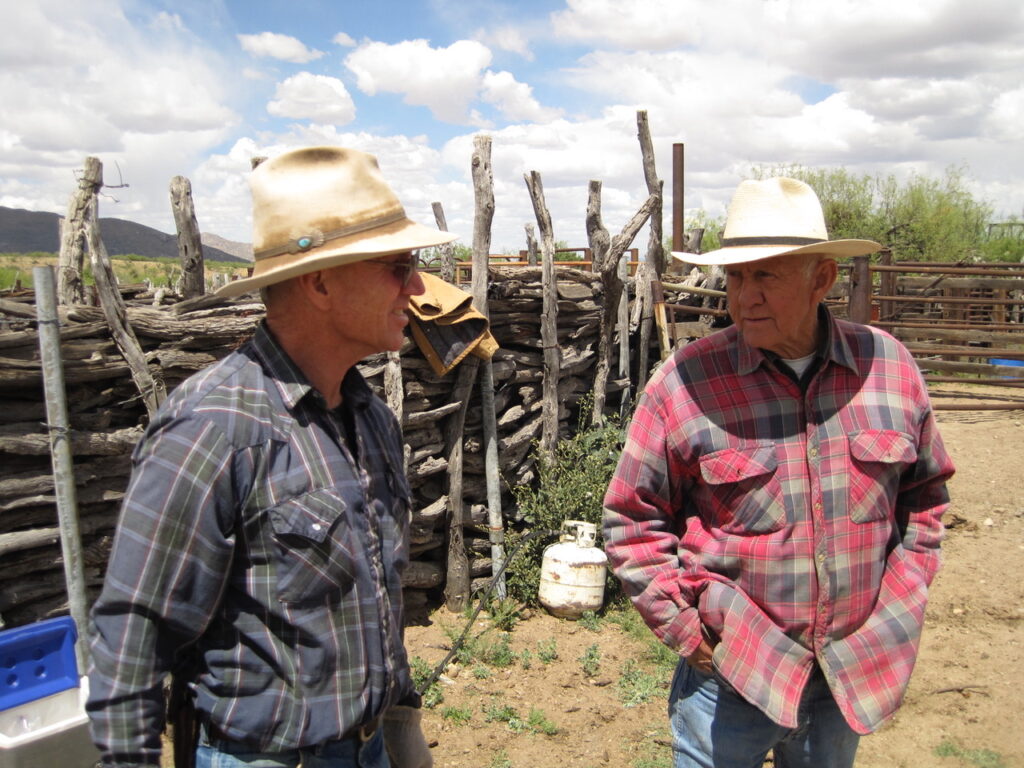
At the Elkhorn Ranch, guests are encouraged to stay for at least a week, allowing for acclimation to the lifestyle and country. This time allows guests a chance to get used to the horse they are riding, and then they can fully experience the rugged country with as little distraction as possible. Many people come who already love horses, but many more are people who develop a love for horses after they get to the ranch. Friendships entrenched in the rough terrain are made and last a lifetime, with guests returning year after year and looking forward to seeing their long-lost friends, both people and equine, again. Enticing customers to make the leap and book the trip for the first time is a challenge for the ranch, but it’s hard to keep them away once they are here.
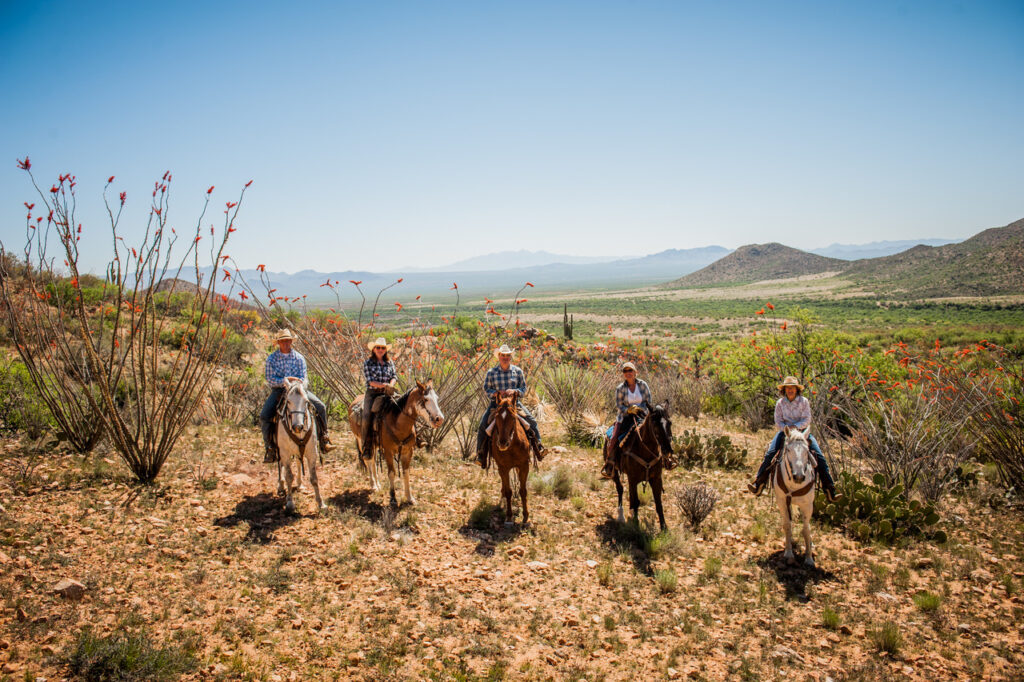
The first generation of the Miller Family, Grace, and Ernest, started guest ranching in Montana in the year 1922 and called their place Elkhorn Ranch. Both adventurous spirits, Grace and Ernest, grew up in the northeast United States and found their way west after World War I. During the war, Ernest was a shooting instructor and left Europe with connections and friends who would be some of the first guests at their ranch in Montana. Also a notable hunting guide, he stalked wild game from Alaska to Mexico. In 1945, the couple purchased the Fresnal Ranch School in the Baboquivari Mountains to expand into a year-round operation, which Montana’s bitter cold winters didn’t offer. The school buildings were transformed into Elkhorn Ranch, AZ. The school had been a working ranch where the students did much of the work. The second generation of the Miller Family, Jan, and Bob, took the lead in building up the new guest ranch operation and also took to cattle ranching with passion.

The historic Arizona drought of the 1970s caused many ranchers heartache and forced hard decisions. In the early 1980s, as the drought continued, the Elkhorn made the difficult decision to get out of the cattle business to help conserve the limited resources offered by the land. This era was a time of change for more than just the range and is when Charley Miller moved into a managerial position and signaled the transition to the third generation at the Elkhorn. This time was also a significant moment for ranching in general. Ranching has continued to evolve over the years, and at that time, range management became a priority. One of the first stages of the evolution was the realization that range management and the use of science are critical. The next stage required increased cooperation between multiple entities, government agencies, and ranchers, all with common range management and conservation goals.
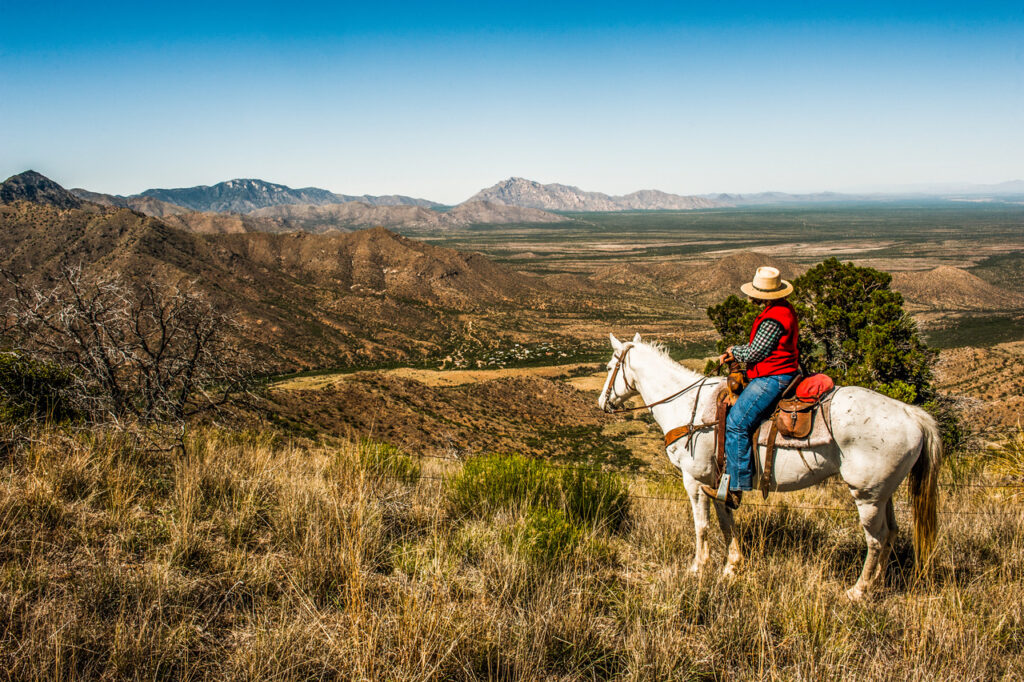
In 1995, the Altar Valley Conservation Alliance was born thanks to Charley and his wife Mary Miller, their neighbors Pat and John King at King’s Anvil Ranch, and many other ranching neighbors. John King and Charley talked about the need to have ranchers work together better, but how to do that was still a question mark. The Malpai Borderlands Group, a conservation effort put together by ranchers, public agency officials, and others in Southeast Arizona, had recently organized and helped to answer that question. The Altar Valley felt many of the same pressures the Malpai group faced, so the Alliance was modeled after this group. As the Alliance evolved, it facilitated the bringing together of people, including government agencies, environmental groups, ranchers, and other users. They looked at problems together, came up with solutions, and worked through the process as collaborators.
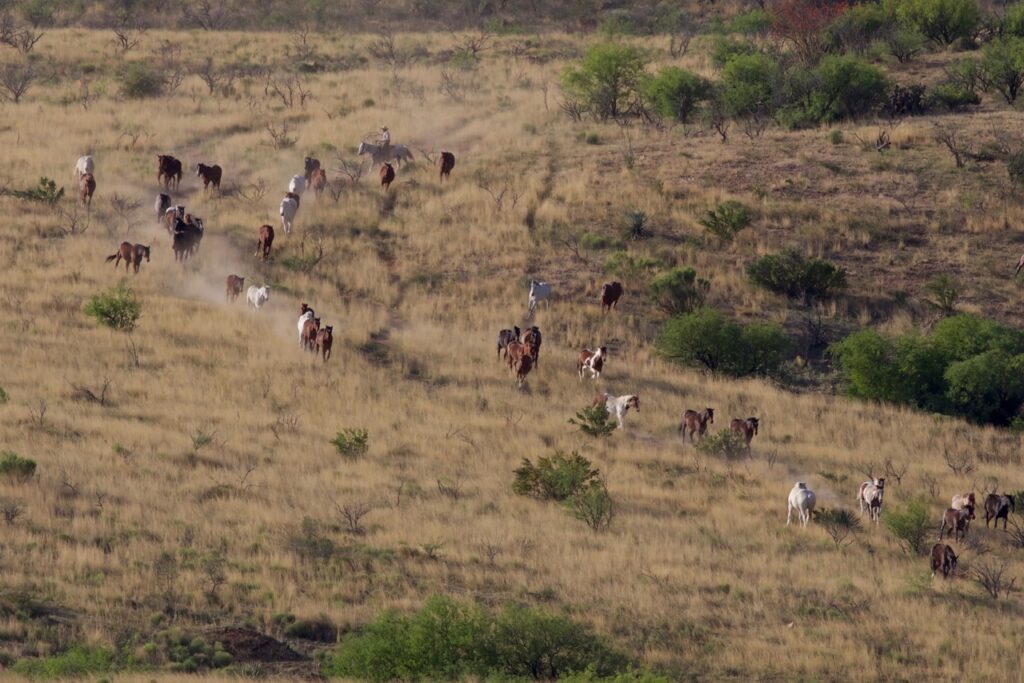
For over 25 years, the valley’s ranchers have been working together with the Elkhorn continuing its heavy involvement bringing their commitment to conservation and a vested interest in the valley remaining open. The open spaces, the incredible views, and the ranching neighbors are a huge part of what makes this a successful guest ranch. Collaboration and cooperation with ranching neighbors are critical to individual success. Many people who come to the guest ranch are significant donors to the Alliance and support the conservation of the open spaces and ranching of the Altar Valley.

So while some guest ranches may not have the cattle component, they are a great connection between the general public and ranching. The Elkhorn is an excellent example of a guest ranch that works hard to use their land properly to raise their animals while making their living from this precious desert terrain. For those who know nothing about ranching, this link provides a way to learn more about how ranchers care for their land and the animals they raise, whether horses or cattle. Guest ranches keep alive the curiosity for the west and give people a venue to explore that curiosity and continue to support the lifestyle even when they go back to their cities across the US and the world. With the fourth generation, daughters Clara and Alicia, working alongside the third generation, the Elkhorn Ranch continues as a legacy of connection and bringing people together and will do so for years to come. Learn more about the Elk Horn Ranch by visiting their website.
Cowboy Lifestyle Magazine
This article was created for the Summer Issue of the Cowboy Lifestyle Magazine which was released in early July. You can catch this article and many more by checking out the full issue. For more information on Cowboy Lifestyle Magazine, visit the website here.
Last Updated on 09/01/2022 by Tiffany Selchow
CLN Community Sponsor
